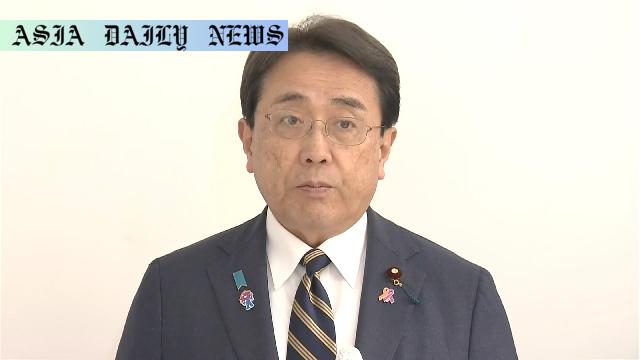Trade Talks: Japan’s Akazawa Ryosei discusses progress in US trade negotiations, prioritizing tariff concerns and technical details.

Introduction to the Japan-US Trade Talks
In an ongoing effort to reach a mutually beneficial trade agreement between Japan and the United States, Japan’s chief negotiator, Akazawa Ryosei, has returned to Tokyo after the second round of comprehensive trade discussions in Washington. These trade talks aim to address complex and pressing issues regarding tariffs and market access between the two economies. With global supply chains in flux, these negotiations hold critical importance for shaping the economic dynamics of the two nations.
Key Takeaways from the Discussions
At the heart of these discussions were concerns regarding US tariffs on Japan’s primary exports, including cars, steel, aluminum, and automotive components. Akazawa emphasized the need for a balanced resolution, underscoring the impact of tariffs on the Japanese economy and industries. While Japan has continued to press for the removal of such tariffs, US officials, including Treasury Secretary Scott Bessent, maintained their stance on reciprocal tariffs, citing the need for fairness in trade deals. Despite this hurdle, the talks were described as “frank and constructive,” signaling potential for progress in upcoming negotiations.
Technical Challenges and Future Prospects
Beyond tariffs, working-level negotiations have delved into technical and political aspects of the trade structure. Akazawa has highlighted the importance of detailed discussions on regulatory alignments and market accessibility. This meticulous approach demonstrates Japan’s commitment to addressing broader economic and geopolitical concerns that extend beyond mere tariff removal. Japan aims to establish a partnership reflective of both countries’ economic contributions and pave the way for smoother global trade mechanisms.
Political Implications of the Talks
These trade discussions have significant political weight for both nations. For Japan, removing hefty trade barriers remains a high-priority issue to boost its manufacturing and export sectors. For the US, on the other hand, the negotiations reflect the broader agenda of maintaining equitable trade balances while asserting fairness through reciprocal tariffs. The outcome of these discussions could set a new precedent for international trade partnerships and could influence trade relations beyond these two nations.
Conclusion and Future Outlook
The trade talks between Japan and the United States offer an opportunity to create a more equitable and prosperous economic relationship. While challenges such as tariff discrepancies persist, the continued dedication of both nations to proactive and constructive discussions is a step towards resolving these critical issues. As working-level negotiations continue, the spotlight remains on the ability of officials to address intricate technical and political dimensions of trade policy. With mounting global expectations, these talks demonstrate the resilience and commitment of both nations in fostering a prosperous future together.
Commentary
Understanding the Economic Stakes
The recent trade negotiations between Japan and the United States highlight the interconnected nature of today’s global economy. Trade agreements are no longer about isolated industries; they address multifaceted concerns ranging from tariffs and market access to geopolitical alliances. Japan’s prioritization of removing tariffs on exported cars, steel, and aluminum underscores the gravity of the situation for its manufacturing sector, which is a cornerstone of its economy. Similarly, the US intent on ensuring fairness through reciprocal tariffs reveals its commitment to balancing trade deficits. Both sides approach the discussions with clear economic stakes, making the outcome even more significant.
Framing the Importance of Dialogue
The emphasis on maintaining open dialogues and constructive discussions is commendable, especially considering the complex nature of these issues. Akazawa’s return to Japan with a positive outlook on the conversations signals progress, even if substantial agreements have yet to be reached. Technical and political discussions may often seem tedious, but they are critical to crafting comprehensive solutions. It’s encouraging to see both nations engaged at this granular level to find common ground, which is a testament to the strength of their bilateral relationship.
Looking Ahead
As these negotiations progress, it will be intriguing to observe how both nations prioritize their strategic interests while fostering mutual growth. For Japan, tackling tariffs head-on is vital. For the US, asserting fairness without compromising economic relations is key. Successfully navigating this dynamic requires not only technical prowess but also the political will to compromise. One hopes that the efforts of Akazawa, Bessent, and their respective teams pave the way for a robust agreement that aligns with the aspirations of both nations and contributes to a stable global trade network.


